Steem-Nature -- Research Methodology ECHINODERMATA -- EPs-2
CHAPTER I
PRELIMINARY
A. Background
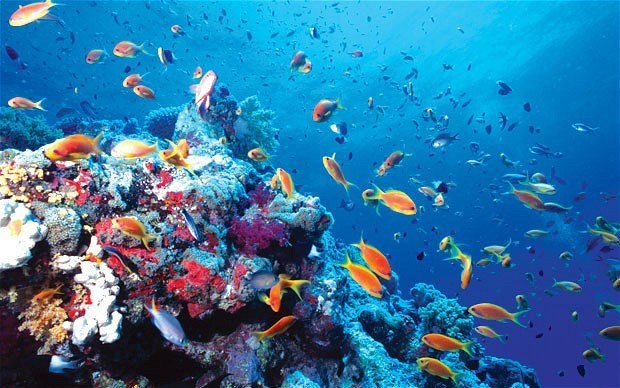
Marine Life
Credit Image : via jia-xiang.biz
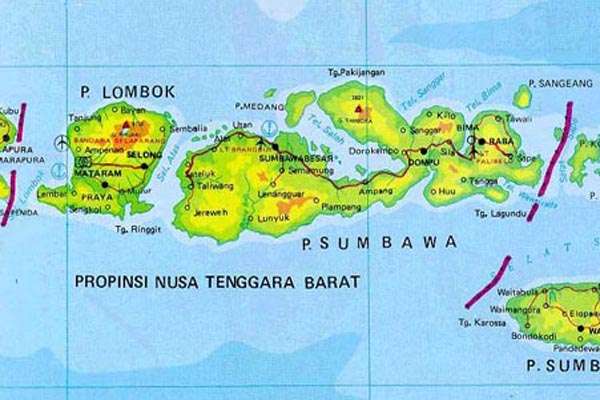
West Nusa Tenggara Province
Credit Image : via bali.bisnis.com
West Nusa Tenggara Province (NTB) consists of two large islands and several small islands that have an area of about 29,870 km of waters and coastal length reaches 1,364 km. Waters in NTB have high biodiversity, because almost all species of marine animals and plants can be found in the waters of NTB (NTB Fisheries Department, 1994).
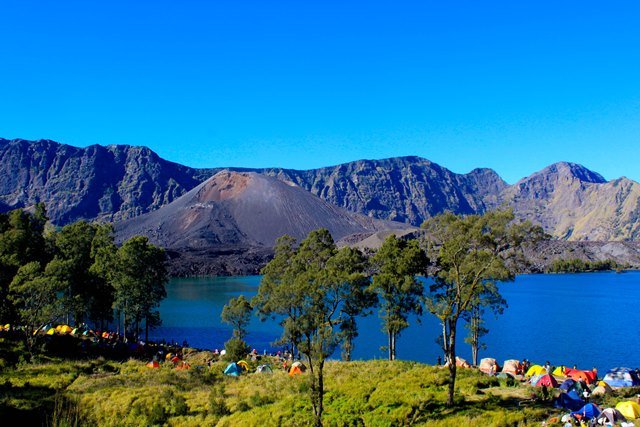
Rinjani Destination
Credit Image : via Google
One type of animal found only in the sea is echidonemata. Echidonemata occupies a variety of habitats Zone Trumbu Coral, Algae growth areas, other types of marine species, Living Coral colony, Dead Coral colony and betting coral areas. Echidonemata is an important Dystic component in the food chain cycle. Food and Phylum Echidonemata type of tripang is a detritus so that this animal is found in many areas containing detritus (Aziz, 1991).
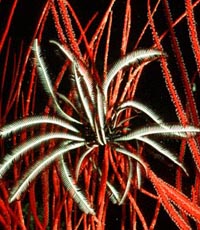 |
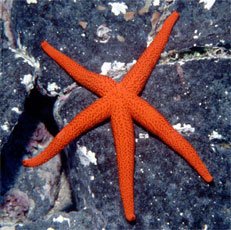 |
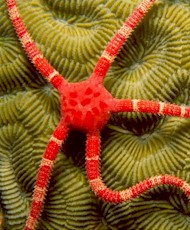 |
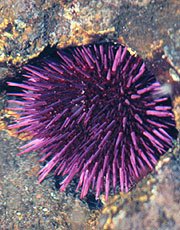 |
The existence of Echidonemata in some areas in NTB has been reported by some researchers, in the waters of West Lombok in the north there are 12 species of Echidonemata, at Kuta beach there are 38 species and managed to collect 19 species Echindonemata (Putra Suryadi, 1999). The existence of Echidonemata in the waters of Pasir Putih in Teluk Nare village Kec. Pameng district of North Lombok until now the research has never been obtained / researched so that the existence of information about fauna Echidonemata not yet exist.
B. Research Objectives
This study aims to determine the density and diversity of Enchinodermata on the coastal area of Pasir Putih Bay of Teluk Nare Pamenang District, North Lombok Regency.
C. Research Benefits
Through the research conducted is expected to have the following benefits:
1. Theoretical benefits
In the field of research, research results are expected to bermanfaan as early information to students or students that the beach White Sand Wane merapakan areas that are potential to conduct field practice. enriching the treasures of science, especially in the field of freshwater fisheries.
2. Practical Benefits
From the results of this study is expected to input in the field of marine aquaculture for future research can add information for further researchers, especially about freshwater fisheries.
CHAPTER II
LITERATURE REVIEW
A. Common Features of Echinoedermata
Common features of Echinoderms are as follows: a). Radial symmetry in adult animals, has five parts while the larvae of bilatral symmetry, has three basic tissues are ciliated, have no head and brain, b). The body surface has a bulbous leg or an ambulacral leg, c). The body is wrapped by a smooth epidermis with a lime-stripped chalk called laminea or ossicula, d). The digestive tract is usually complete but there are some that do not have anus, e). Having a circulatory system that reduces reduction, f). Respilasi done with small gills or papules arising from coelom, some types using the legs ambulakral, g). The nervous system with ring rods branched off to the radial, h). Separate sex with some exceptions (Jasin, 1989),
1.1 Classification of Echinoderms
Classification of Echinoderms according to Barnes, 1974 in Rizal (2001)
Class : Stellroiea
Subclass: Stamostroidea
Class : Asteriodea
Order :
- Plastisterida
- Paxillosida
- Valvotida
- Spinuloside
- Focipulotide
Class: Ophiuroidea
Order:
- Stenuride
- Oeghopriurida
- Phyrinophiurida
Class: Echinodea
Subclass: Peschochinoidea
Order: Chidoroida
Subclass: echinoida
Super Order: Diadematacea
Order:
- Pedinoida
- Diadematpida
- Ecinothuroida
Super order: Echinnacea
Order:
- Arbacioda
- Salenoids
- Temnopleuroida
- Phymomosomatyda
- Echinoida
Super order: Gathostomata
Order:
- Holecthypoida
- Clypeasteroida
Super Order: Atelostomata
Order:
- Holosteroida
- Spatongoida
- Casiluloida
- Neolompidoida
Class: Holothuroida
Order:
- Cacthylochiroida
- Dendrohirotide
- Asphichirotide
- Elasipodida
- Apodids
Class: Crinoida
Sub Class:
- Eochinoida
- Parcrinoidea
- Eucrinoids
Order:
- Inadunata
- Flexibillia
- Comerata
a. Asteroidea Class (Sea Star)
As the name implies, a star-shaped body with five or a radial part. There are thorns of various sizes on the surface of the skin of the body both oral and aboral and around the base of the thorn there is a form of tongs on the tip called pedicellaria. In one part between the two radial body parts or the arm there is a madereporite sieve plate as the entry point of water in the water vascular or ambulacral system. The anus is in the middle of the dorsal portion of the mouth in the oral portion. The body supporters are composed of chalk or ossicullus (Brotowidjoyo, 1993).
The body supporter of this class occurs in the dermal branchia located on the aboral, the nervous system composed of a radial nerve rod in each arm. Sex on the Separate Sea Star is there are abstinence and there are females. Fertilization occurs in the water, then the fertilization rate will grow into bipinria larvae. Starfish has high regeneration power.
Some types of sea bamboo have beautiful bright colors, red, orange, blue, or with some interesting patterns and contrasting colors (Nontji, 1993). Starfish live in rough terrain, coarse substrate, soft substrate, and commonly present in coral reef areas. The starfish creeps past the rocks and lives in the sand.
The ability of stars to adapt to selinitation is shown by some species, eg asterias rubens only resistant to low salinity, while luidia clathrata has a certain tolerance to salinity in nature, this animal lives in salinity of about 27% (Jasin, 1989).
b. Ophiuroidea Class (Snake Star)
Snake stars have a body like a small disc ball with five long arms. In the lateral part there are thorns, whereas the dorsal and ventral parts have no thorns. The interior of the segment is mostly filled with cylindrical ossicula allowing the arm to be bent. In the arm there is also a small ambulacral leg which is often referred to as the teritakel is located in the ventro lateral with a suction or ampullae tool that uses a sensory and also help breathing that allows food to enter the mouth. The mouth lies at the center of the body surrounded by five groups of lime plates and has no anus. Madreporit is located in the surface area near the mouth. Bisexual and fertilization occurs outside with ciliated larvae (Brotowidjoyo, 1993).
Snake stars that live in the tropics generally live in waters with temperatures between 27 - 300 C, but resistance to this temperature depends on geographic position and inward (Suryatim 1999).
c. Class Enchinoidea (hedgehog)
The animals entering the Enchinoidea class are round, unarmed, but have movable thorns. In general, Sea Urchin has jarohan or viscera stored in the graft. The sea urchins have five paths of ambulacral legs that are intercrossed by a rather wide area of interambulacral with no legs. Some types of Ennchinoidea have poison glands. Among the thorns there are pedicellaria that serves to cleanse the body and to catch snacks. The anus is located at the center of the body on the aboral surface. While the mouth is equipped by five teeth located in the oral area and madreporit is located in the aboral area (Brotowijoyo, 1993).
In the sea urchin there is a circular vessel, five palm tube vessels with ampulla. There is a neural ring with five branches and a neural plexus. Sex is separate, fertilization occurs in the water. The larvae are formed with bilateral symmetry, free swimming and called the pluteus larvae. Limit of salinity tolerance of true marine sea urchin group is between 30 - 34% (Suryati, 1999).
d. Holoturoidea Class (Sea Cucumber)
Sea cucumber has a rounded body extending with the oral line to the aboral as the axis, the body folded by the skin containing a microscopic ossicula. In the anterior part of the mouth there are 10 -13 tentacles that can be stretched and pulled back. Holothuroidea lies with the dorsal portion at the top. The ambulacral leg can contract and function as a respirator. Ventral area there are three ambulacral leg areas that have suction tool, which serves to move and three lines there is a dorsal position used for breathing. Madreporit is located in coelom. In this animal there is a nerve ring and radier nerves. Sea cucumbers quickly react to stimuli. Usually gender is separate but there is also a hermaphrodite with bilateral symmetry larvae (Brotowidjoyo, 1993).
Some species such as Thyonidium Pelluidum, Thyone sp, and Drotankyra similis can live in brackish waters with a salinity of about 20 but some members of the Holothuroidea class are not resistant to low salinity (Aziz, 1991).
e. Crinoidea class (Sea Lily)
Crinoidea class of animals have a shape like a lily that can live in the sea with 3,648 m deep. The body is shaped like a cup called a composed calyx and a lime slab. From the calyx it emerges five flexible arms with short tentacles each of which has a lot of pinullae such that bird feathers decompose several types of sea lilies have stalks or stalks that serve to cling to the seabed or substrate. The mouth lies in the oral region, while the anus is in the aboral region. In the oral section there is an ambulacral curve that contains tentacles like feather legs, internal fertilization, and even a zygote developing in the body (Jasin, 1989).
Sea lilies require high salinity sea water with tolerance to normal sea water to salinity of 28 - 36% (Suryati, 1999).
B. Thinking Framework
Echinodermata body shape is radial symmetry. And most have a body booster and lime with bumps, which are thorns, these animals live on the beach and in the sea up to about 366 meters, some live free movement slow, no parasites. This animal is a sea food waste so the sea becomes clean. Sometimes these animals group in large numbers but do not form colonies, there are several types of these animals can be used as foodstuffs such as tripang.
Pasir Putih beach area in Teluk Nare village Kec. Pameng district of North Lombok is one of the beaches inhabited by various kinds of Enchinodermata so that my researcher feel interested to research about Echinodermata community in Pasir Putih beach area in Teluk Nare village Kec. Pameng district of North Lombok.
C. Hypothesis
Hypothesis is a temporary answer to the problem of research until proven through the collected data (Suharsimi, 1998). Another opinion says that the hypothesis can be interpreted as a statistical statement about population parameters (Sugiono, 1997). The hypothesis proposed in this study are: There is an increase in density and diversity of Enchinodermata in the waters of White Sand Beach of Nare Bay Pamenang Subdistrict, North Lombok regency.
CHAPTER III
RESEARCH METHODS
RESEARCH METHODS
A. Indentify Variables
Variables is a thing that becomes the meeting point of a research. In this study the variables used are dependent variable and independent variable or variable X (Coastal waters) while variable Y (Community Echinodermata). So it can be concluded that the variables in this study are variables that affect each other between variables X and Y so it can be described as follows

Information :
X = Coastal waters
Y = Cominity of Echinoderms
B. Operational Definition
To avoid misunderstanding of the variables or syllables used in the title of this study, it is necessary to explain some terms as follows:
1. Community
The community is a collection of different populations in one particular place (Suharsimi, 2002). Referred to as the community in this study is a collection of different Echinodermata populations in the waters of the White Sand Beach of Nare Bay Pamenang Subdistrict, North Lombok regency
2. Echinodermata
Echinoderms derived from the Greek Echinos means thorns, derma meaning skin, thus Echinodermata means skinned animals (Jasin, 1989). Echinodermata referred to in this study is a skinned animal thorns, consisting of starfish, snake stars, sea lilies and sea cucumbers.
C. Population, Samples and Sampling Techniques
1. Population
Population is the whole object of research, if one wants all the elements that exist in the area of research, then the research is called the overall population of research subjects (Suharsimi, 2002: 108). While other experts say that the population is all the data that concern us in one scope and time that we specify. (Margono, 1996: 118). Based on the above opinion it can be drawn a conclusion that the population in this study is the enchinodermata on the coast of white Sand Beach Nare Bay Pamenang District North Lombok regency
2. Sample
The sample is the partial or representative of the population to be studied (Suharsimi, 2002: 109). Meanwhile, according to Margono (1997: 121) sample is part of the population as an example taken by using certain ways.
One of the main conditions of a good sample is that the sample must be representative, that is, reflect the characteristics or nature of the population. In order to achieve this it is necessary to find a sample member called a sampling method. The sampling method is a method of taking the subject of research where the subject to be studied consists of the number of individuals representing the larger number (Netra, 1992: 23).
Meanwhile, according to Arikunto (1996: 120) that if the subject is less than 100 better taken all so that his research is a population. Furthermore, if the subject is large can be taken between 10-15% or more. Based on the above opinion, it can be concluded that in the sample in this study is a population that has certain characteristics and characteristics.
D. Data Collection Technique
Data collection techniques are ways that can be used to collect data (Arikunto, 2002: 34) in this case to obtain data that reflect the problem to be researched and accountable, then in this technique used is:
E. Data Collection Technique
1. Sampling technique
The study was conducted using a belt transect method measuring 20 m x 20 m. This method is done by making a line of observation station that is perpendicular to the shoreline. Then determine the position of the station that is the station I to the north, station II to the south where the distance between stations is 320 meters, on the line station is made belt transect line parallel to the coastline with the length of 20 m and width 1 m and made at every 10 m from station gari.
Sampling is done at full moon because at the moment sea water is receding, Enchinodermata sampling is done by recording and counting species and amount of Enchinodermata contained in observation transect. In addition, there was also a contemplation of the observed Echinodermata fauna to complement the existing data.

Description:
A = Line of station
B = Line of transect
Model image of the observation station using a belt transect
2. Identification of Species
Identification of Echinodermata species by observing morphology covering the shape of size and color and matched with Sea Stars Of Australia key book by Coleman N (1994), and Invertebrate Zoological book by Jasin (1989).
F. Validity and Realibility
1. Validity
To determine the validity of items can be calculated using the formula product moment

Information:
Rxy: Product moment correlation coefficient
Xy: Multiplication result between variable X with variable Y
X: Variable Scores of Coastal Waters
Y: The Echinodermata Community variable score
Σ: Sigma (Amount)
N: Number of Sample (Research Subject) (Arikunto, 2002: 243)
G. Experimental Design
Rangan research is a necessary process in planning and conducting research on the preparation of data collection and analyzing data to be economically implemented and compatible with the purpose of research (Nazir, 1988: 97). In this case the researcher uses descriptive explorative planning design research at two stations that is station I in the north, station II in the south, the distance between station I to station II is 320 m, then make the station line perpendicular to the coastline. At the line of the station is made a transect belt measuring 20 m x 2 m as 5 transects the distance between the belt transect is 10 m.
Sampling was conducted three times a week for two consecutive months from February to March 2008. Total sampling was conducted 24 times. The location of the station is specified in such a way that it can represent the whole research area.
H. Data analysis techniques
In this study the density of Echinodermata on the coastal area on the white sand beach of Teluk Nare Pamenang District, North Lombok regency. Calculated using the formula from Michail (1984) in Rizal (2001).
While the diversity of Echinodermata species was calculated by the Shannon-Winner diversity index (Barus, 2001).
H '= - Σ (pi In pi)
pi = ni / N, where:
H = Shnnon-Winner diversity index
N = Number of Individuals of all species
ni = Number of individual species i
pi = number of species i per total number of individuals
When:
0 <H '<2, 302 = Low diversity
2,302 <H '<6,907 = Medium Diversity
H '> 6, 907 = High diversity
BIBLIOGRAPHY
Barus, AT. 2001. Introduction to Limnology, Gramedia, Jakarta
Brotowidjoyo, M.D. 1993. Basic Zoology, Erland, Jakarta
Coleman, N. 1994. Sua star of Australia And Ther Relative Nation Library of Australia Cataloging in publication date Australia
Jasin, M. 1989. Invertebrate Zoology. Sinar Wijaya, Surabaya
Nursin, 1997. Animal Ecology Land, Earth Script: Jakarta
External links
Stöhr, Sabine (2014). Echinodermata. World Register of Marine Species. Accessed 23 February 2014.
The Echinoid Directory from the Natural History Museum.
Echinodermata from the Tree of Life Web Project.
Francis J.R. dan Elizabeth J.R. Binatang Laut dan Echinodermata Lain. Ilmu Pengetahuan Populer, ISBN 979-8087-53-4
Berkley taxonomy on the Echinodermata.
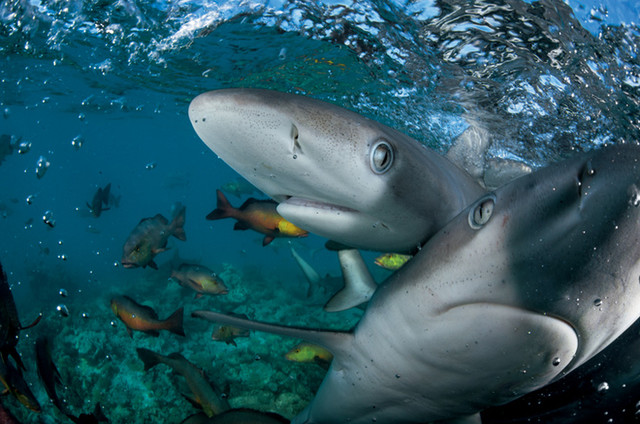
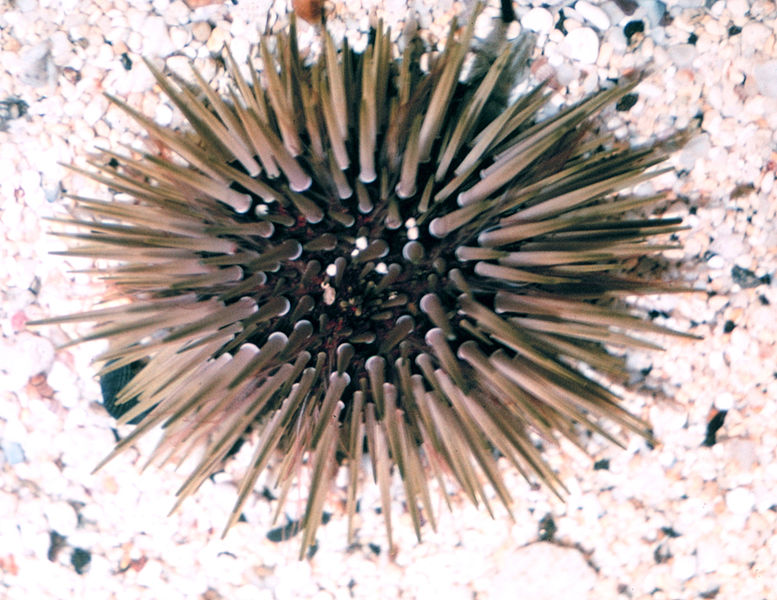
Congratulations! This post has been upvoted from the communal account, @minnowsupport, by steemnature from the Minnow Support Project. It's a witness project run by aggroed, ausbitbank, teamsteem, theprophet0, someguy123, neoxian, followbtcnews/crimsonclad, and netuoso. The goal is to help Steemit grow by supporting Minnows and creating a social network. Please find us in the Peace, Abundance, and Liberty Network (PALnet) Discord Channel. It's a completely public and open space to all members of the Steemit community who voluntarily choose to be there.